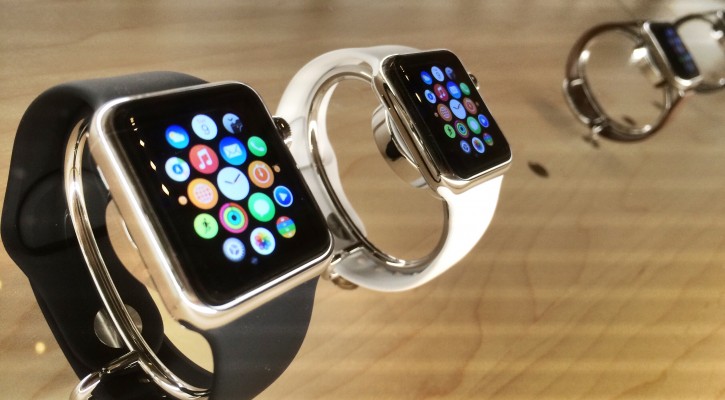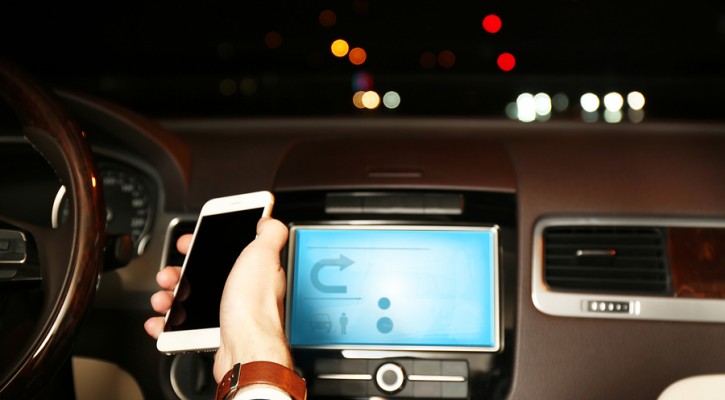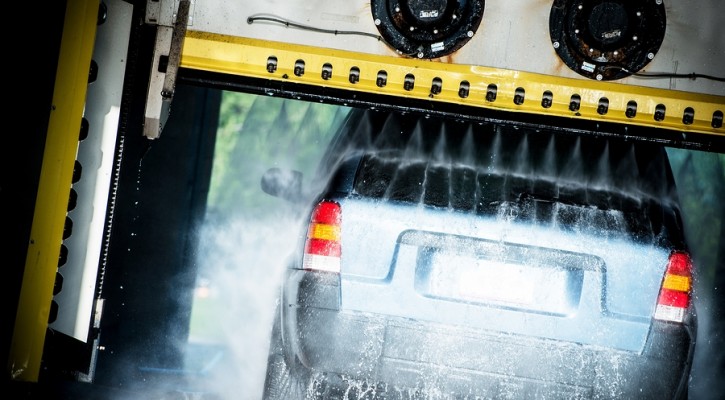Smartphone Users Go Beyond Texting To Web Surfing, Video Chats While Driving
May 20, 2015
Smartphone users admit to going beyond texting while driving to a wide variety of smartphone activities according to a new study by AT&T. While cellphone use and texting are still the most common activity that drivers engage in, the AT&T study revealed that 70 percent of drivers engage in other smartphone activities such as taking selfies and even video chatting.
According to the AT&T news website, smartphone activities people say they do while driving include:
- Text (61%)
- Email (33%)
- Surf the net (28%)
- Facebook (27%)
- Snap a selfie/photo (17%)
- Twitter (14%)
- Instagram (14%)
- Shoot a video (12%)
- Snapchat (11%)
- Video chat (10%)
Other unsettling findings include:
- 62% keep their smartphones within easy reach while driving.
- 30% of people who post to Twitter while driving do it “all the time.”
- 22% who access social networks while driving cite addiction as a reason.
- Of those who shoot videos behind the wheel, 27% think they can do it safely while driving.
While AT&T is one of the major cellphone and smartphone marketers in the US, they recognized the dangers of cellphone use and texting while driving years ago. To educate drivers on the dangers of these activities, they launched the “It Can Wait” program in 2010. Their videos present a powerful message on the dangers of texting while driving and the impact those decisions can have on the cellphone user and their family.
As a result of this study, AT&T says it will expand the It Can Wait program to go beyond texting and warn drivers about the dangers of engaging in other types of smartphone activities while driving.
Other studies show that drivers are starting to realize the dangers of texting but, in spite of that awareness, they still seem to think that they are more skilled in the practice and the dangers only apply to other, less skilled drivers. Now it seems that the very dangerous issue of driver distraction is moving beyond texting into even more dangerous distracting activities.

The Apple Watch And Driving
May 4, 2015
Apple has recently introduced its Apple Watch with a lot of hoopla about all of its capabilities including email and phone. What they aren’t saying much about are the dangers the new Apple Watch can pose for drivers who try to use it.
Distracted driving is a major problem in the US with 3,154 deaths and 424,000 injuries blamed on distracted driving in 2013. If that’s not a big enough problem, it seems that electronics manufacturers are trying to add more and more devices to distract drivers every month.
The Apple Watch is advertised as a device to keep you connected at any time, wherever you may be. That may be true but that connectivity could come at a great cost if you try to use it while driving.
The main distraction in an Apple Watch is its size. The Apple Watch comes in two sizes measuring only 1.4 to 1.6 inches from top to bottom. Making a selection on a screen size that small is going to take a bit of concentration. Scrolling through selections on an Apple Watch is accomplished by use of a small hand wheel on the side and using it will require a user to both look at the watch on one hand while using the other hand to scroll and select options.
Even if users try to use the voice activated Siri, studies have shown that using Siri or other voice activated systems is more distracting than using a hand-held phone.
While the Apple Watch may be a wonderful device in other situations, using it while driving is obviously going to be cumbersome and very distracting. A lot of states have either passed or are considering bans on the use of cell phones while driving. Now they may have to consider bans on the use of the Apple Watch and other similar Android devices. However, laws like that are going to be hard to enforce.
Read more: Smartwatches Reported To Be Less Safe While Driving Than Smartphones

Is Voice Activated Texting While Driving Safer?
April 23, 2015
Automakers and cell phone companies are pushing voice activated texting as a safe alternative to manual texting but is really safer? Not according to researchers at Texas A&M University’s Transportation Institute (TTI).
While most studies of this kind involve observing study participants on computerized virtual driving courses, Christine Yager, an associate transportation researcher at TTI conducted a study in actual cars on a closed driving course; the first study of its kind.
Forty-three participants were observed under several different driving scenarios. They first drove the course without the use of cell phones and their reaction times were measured to create a baseline. They were then observed three more times, texting manually and using two different voice activated texting programs (Siri and Vlingo). Test subject reaction times to lights that came on at random times on the course were measured in each of the driving scenarios.
The study showed that, if the driver chose to visually verify the contents of the text, the voice activated texting systems offered no safety advantage over manual texting.
According to the TTI website, other findings from the study showed:
- Driver response times were significantly delayed no matter which texting method was used. In each case, drivers took about twice as long to react as they did when they weren’t texting. With slower reaction times, drivers are less able to take action in response to sudden roadway hazards, such as a swerving vehicle or a pedestrian in the street.
- The amount of time that drivers spent looking at the roadway ahead was significantly less when they were texting, no matter which texting method was used.
- For most tasks, manual texting required slightly less time than the voice-to-text method, but driver performance was roughly the same with both.
- Drivers felt less safe when they were texting, but felt safer when using a voice-to-text application than when texting manually, even though driving performance suffered equally with both methods.
Chimps Do It, Why Can’t We?
April 21, 2015
An interesting study of wild chimps in Uganda’s Kibale National Park shows that chimps are extremely cautious when crossing busy roads. The 29 month study observed the chimps’ behavior when crossing busy highways and little traveled roads.
When crossing roads that were rarely traveled, the chimps used little care and crossed in large groups. However, when crossing a busy roadway with cars traveling 45 to 60 mph, the chimps used great care, they looked both ways and, once they were sure the roadway was clear, they crossed quickly in small groups. Fifty-seven percent of the chimps ran across the roadway. As shown in the video above, the older, stronger chimps would wait and make sure younger or weaker chimps crossed safely.
The researchers hope to use the data they gathered to improve roadway safety for the chimps in the park. Road building is on the rise in Africa and African wildlife will be subjected to more and more roadway hazards.
It would almost seem that the same data from the chimp study could be applied to humans but the chimps seem to show much greater care when crossing a highway than humans do. For one thing, chimps will never be seen talking on a cell phone the way sixty percent of pedestrians in the US do when they are crossing roads; nor will you find them with earbuds in their ears listening to an iPod. The chimps will never make eye contact with a driver and expect him to stop in time.
Distracted walking figures are hard to come by but safety experts feel that emergency room figures don’t tell the whole story when it comes to distracted pedestrian injuries. The Consumer Product Safety Commission says that, if distracted walking figures are similar to distracted driving figures, there may have been approximately two million pedestrian injuries related to cell phone use in 2010.
Not all of those two million injuries involved pedestrians on roadways but the roadway problem is severe. In 2013, there were 4,735 pedestrians killed and an estimated 66,000 injured in traffic crashes in the United States. Pedestrian deaths have made up fourteen percent of the total number of highway deaths for each of the past three years.
Between distracted drivers and distracted pedestrians, it seems that the people who gather and total up crash data are the only ones paying attention to what happens on the road. Everyone needs to start paying more attention to the road; the way chimps do.

Wash The Underbody Of Your Vehicle: NHTSA
April 16, 2015
Wash the underbody of your vehicle is the common sense advisory the National Highway Transportation Safety Administration (NHTSA) gave in closing out a recall investigation of corroded brake lines on older model GM vehicles.
The NHTSA investigation began in 2011 after receiving multiple reports of brake line failures in GM cars and trucks. After a four year investigation of vehicles manufactured between 1999 and 2003, NHTSA concluded that the corrosion of brake lines were mostly limited to those states that use salt or other corrosive chemicals for snow removal on the roads. Their investigation revealed that the brake line corrosion problem wasn’t unique to GM vehicles and occurred at about the same rate as those that occurred in vehicles built by other manufacturers. According to NHTSA, the brake line corrosion problem was due to salt and other corrosive snow removal chemicals that accumulated on the underbody of vehicles and didn’t indicate a manufacturing problem that would require a recall.
Instead of issuing a recall, NHTSA advised all drivers, especially those who live or drive in states where salt and other snow removal chemicals are regularly used, to thoroughly wash the underbody of their vehicles and keep the underbody clean during the spring and summer.
NHTSA also advised vehicle owners, especially those who drive vehicles manufactured in 2007 or earlier, to have the brake lines inspected on a regular basis and replace lines that show evidence of heavy corrosion. They also advised that owners have their brake lines inspected if they experience loss of brake fluid, unusual leaks, or spongy brakes.
If your brakes should fail, NHTSA advises drivers to apply steady force to the brakes and reminds drivers with anti-lock brakes to never pump the brakes.
Read more: NHTSA Closes Investigation into Brake-Line Failures
